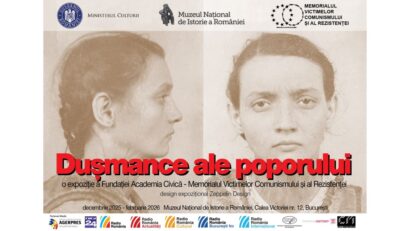A fresh perspective on Romania’s inter-war figureheads
The controversial King Carol II

Steliu Lambru, 18.09.2023, 14:00
Romania, for two decades, over 1920
and 1940, had to face the growing revisionist aggression coming from the country’s
two great powers lying nearby, Nazi Germany and the Soviet Union. Revisionist
claims also came from Romania’s neighboring countries, Hungary and Bulgaria.
Nazi Germany occupied France in June 1940. At about the same time, the Soviet
Union issued two ultimatums to the Romanian government whereby it demanded the
ceding of Bessarabia and Northern Bukovina. On August 30, 1040, through the
Vienna Treaty, Germany and Italy imposed on Romania the ceding of Northern
Transylvania to Hungary. On September 7, 1940, through the Craiova Treaty, Germany
and Italy again imposed the ceding of the Quadrilateral region or Southern
Dobrogea to Bulgaria. The ensuing crisis made it possible for a certain government
to ascend to power, a government made of the Iron Guard and Marshal Antonescu. All things considered, King Carol II was the main character to be held to account
at that time. Shortly afterwards, King Carol II lost his throne.
The sovereign had an extremely
powerful personality. Clever and manipulative, in 1938 King Carol II instated a
personal authority regime, dismantling the political parties and banning free
press. For his son, King Carol II was an abusive father, since he dethroned him
in 1930, when Michael was a still a minor. The name of King Carol and his camarilla
were in many cases linked to corruption scandals. In his boundless vainglory, even
after the deep crisis of 1940, Carol II refused to step down. Instead, he simply
left the throne and the crown.
Notwithstanding, for his decade-long reign, between 1930 and 1940, the name of King Carol II is connected to Romania’s
most prosperous period. Capital city Bucharest was systematized and the building
of the Colentina river lakes in northern Bucharest was initiated. As for culture,
at that time it benefitted from substantial support. The King’s contemporaries were
not unanimous in stating that King carol II was a fated figurehead in Romania’s
contemporary history.
Gheorghe Barbul was
Marshal Antonescu’s personal secretary. In 1984, he was interviewed by then the
well-known historian Vad Georgescu of Radio Free Europe. The interview, in 1993,
was included in Radio Romania’s Oral History Center Heritage. According to
Gheorghe Barbul, despite Carol II’s fraught relation with Antonescu, the latter’s
mindset was largely based on political stability, while in Antonescu’s opinion,
monarchy and the King simply overlapped.
Gheorghe Barbul:
Monarchy, Antonescu believed, was indispensable
to a country like Romania, a young country. It was only monarchy that could
guarantee the continuity of the state in a world of demagogues, where, in his own
words, vote owners had replaced the land owners. He hinted at the gap between
pre-1914 Romania and Romania after 1920. And he believed that, given the
impending necessity for the country to have a monarchy, King Carol should in no
way be lambasted, whatever his sins may be. And that because a form of instability
on Romania’s throne could have posed a danger for the country. The father had
already dethroned the son and had ascended the throne, if what a certain part of
the opposition intended to do, especially the National Peasant Party and the Iron
Guard, namely having Michael remove Carol from power and ascending the throne for
the second time around, if all that meant instability.
For jurist and political detainee Radu
Boroș King Carol II was, just as he claimed in an interview dated 1995, one of Romania’s
most important sovereigns who also gave an impetus to the development of
aviation, a domain which at that time had been gaining ground in the country.
Radu Boros:
For me, as a Romanian,
King Carol is still la great king. And, had Romanians been able to understand
him, the progress that we would have made would have been a lot greater that it
actually was. All that was done from the end of World War One to the second
world war, everything that was achieved at home, in industry, in administration
and such like was entirely his will, all that occurred under his patronage, it
was imposed by him. When he came, he found out that in Romania, regarding
aviation, we had nothing! We, in World War One, had very few pilots and captive
balloons. We dealt more with captive balloons than with fighter planes or strategic
bombing capabilities. We, during World War One, had not been what we subsequently
were during the Second World War. Then he decided to give a fresh impetus to
aviation and the impetus he gave military aviation was really great. As part of
military aviation, he was the one who was dead set on founding Romanian
Aeronautics Enterprise in Brasov, where we also built a fighter plane, I.A.R.
14, which at that time, in 1937-1938, was one of the best fighter planes. And
yet, apart from military aviation, he realized we also needed civil aviation. He
was far-sighted and understood aviation was about to become an important means of
transport. And then he decided to establish a Romanian air transport society. Before
this Romanian company was created, Romania participated alongside France in the French-Romanian
Society.
King Carol II
is one of history’s controversial personality. Yet without such a personality,
existence would have been quieter but duller.






























